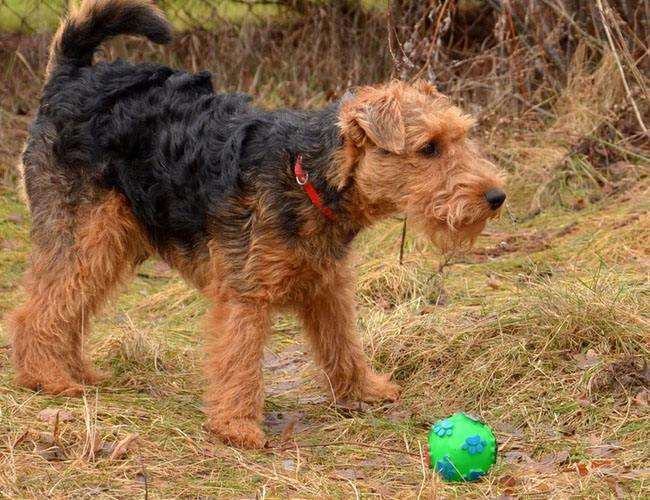Welsh Terrier
IUCN
LCBasic Information
Scientific classification
- name:Welsh Terrier
- Scientific Name:Welsh Daddy
- Outline:Carnivora
- Family:Canidae
Vital signs
- length:36-39cm
- Weight:9-10kg
- lifetime:10-12year
Feature
Naughty and active by nature, likes to provoke other dogs
Distribution and Habitat
Originated from the UK
Appearance
The Welsh Terrier is of medium size, strong, compact body, with coarse, wiry legs. The lower body and head are tan, the upper coat black, occasionally grayish white. The tail is docked, its length giving the Welsh Terrier a square appearance, i.e. the body length is equal to the height. The Welsh Terrier moves with the typical long-legged terrier trot, effortless, with good reach and propulsion. The Welsh Terrier is friendly and friendly to people and other dogs, which shows its spirit and courage. The expression of the Welsh Terrier is shown by the position, color, set and ear posture of the eye.
The coat is hard, wiry, dense. The undercoat is short and soft. The muzzle, legs and feet are densely wiry. The upper coat is black, starting at the neck and going down to the tail and upper thighs. The legs, feet and head are a solid brown. The brown is a dark red, with lighter shades acceptable. Gray is also acceptable.
Details
The Welsh Terrier is a breed of dog native to the United Kingdom, originating in the 19th century.

The ancestor of the Welsh Terrier is the old black and brown terrier of Wales, England. It was first recognized by the British Kennel Club in 1886. It was introduced to the United States two years later. The Welsh Terrier is a solidly built, compact, solid small dog with a rough, wiry coat. The legs, lower body and head are tan; the back, etc. are black (sometimes gray) "jackets". The tail is docked, making it a "square" dog, and the body length is roughly equal to the height at the withers. Its gait is the typical long-legged terrier trot. Easy, reaching and driving well. The Welsh Terrier is very friendly and gets along well with other people and dogs when out. It shows enthusiasm and courage. The "Welsh Terrier expression" is formed by the color and position of its eyes and the combination with its ears.
The tan color of the Welsh Terrier today is the same as it was more than 100 years ago. In other respects, the Welsh Terrier has also changed slightly. As then, the Welsh Terrier is a hunting dog and is widely used in its native Wales to hunt waterfowl, foxes, pigs and other animals. It has the courageous and fearless character that one would want. Although it is brave, it is not aggressive and is in fact polite and easy to get along with. The first record of the Welsh Terrier as a breed was in Earnavon in 1884-1885, but even then it was common for them to be shown as both Old English Terriers and Welsh Terriers. As early as 1893, Dick Torpin, a famous show dog of that era, continued to play this dual role. The Welsh Terrier was first brought to the United States in 1888 by Pre Scottlawreme. At that time, he imported a male and a female dog and entered them in the show of all kinds of dogs in the old Madison Square Park. At that time, only Welsh Terriers were imported. In 1901, the dog was classified at Westminster and 45 dogs were entered in the show. Since then, the popularity of the Welsh Terrier has been rising.
Welsh Terriers are of moderate size, do not shed hair, and have no genetic diseases. They are very suitable for urban families to feed, and can get along well with even large families. However, they are not suitable for feeding with other dog breeds, because Welsh Terriers are naughty and active by nature, and are very obedient to the owner's instructions, but like to provoke each other when they are alone with other dogs, which leads to danger. Professional plucking and grooming are required twice a year. If shaving is used for grooming, the color of its coat will become lighter and lighter. Usually, combing the coat and bathing can meet its daily care needs.
Protect wild animals and stop eating game.
Maintaining ecological balance is everyone's responsibility!








